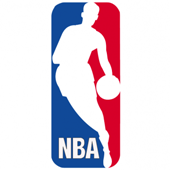Basketball Rules
Playing Basketball: The Rules
Whether you are playing basketball for fun, or as a more serious sport there are a number of rules which will help you to enjoy the game more.
You may just be practising to shoot through one hoop attached to the side of your house, but some of the rules may be applied so you can advance your play, or try scoring for a little competition amongst friends.
If you are a serious player, there are different rules for each Basketball Association, so it is worth checking out which rules your team or tournament will use. For example, the FIBA plays slightly different rules to the NBA. Details of the full rules can be found via the links at the bottom of this page.

How to Play Basketball
The rules of basketball have changed a lot since the game was first invented, in 1891 when the game was invented you weren't allowed to dribble amongst other things.
If you are new to the game, or just want to play for fun then the following main rules are the most important to follow. These are also the main things you may want to do if you are just messing around with friends or in the playground. These are not fully comprehensive rules and just act as a guide. To read the full NBA or FIBA rules click on the links further down the page.
These are:
- Dribbling If you want to move with the ball you must 'Dribble' the ball - this means you have to bounce the ball up and down whilst moving with it. If you are found to be holding the ball whilst moving, you will be violating the rules and the other team gets the ball. Travelling with the ball is counted when the player receives the ball and takes 3 or more steps without dribbling - players are allowed to 'pivot' around one foot when holding the ball, but if the pivot foot changes, this also counts as travelling.
- The ball must be held in or between the hands - the arms or body cannot be used
- The ball may be batted or thrown in any direction with one or two hands - usually in order to pass to another player
- In order to score, the ball must be thrown into the net and pass all the way through
- No physical contact can be made between players - charging is when a player comes into physical contact with another

What is a Foul or Violation in Basketball?
When playing, you may cause a foul or violation.Fouls are caused when a violation or illegal obstruction is caused whilst a player is making an attempt on goal - much like a penalty in football.
One free throw shot is awarded to anyone who has a foul made against them. A free throw is like a penalty, where a free shot or throw is allowed from the free throw line (usually 4.6m from the goal).
If you are playing at home, you may want to mark out a free throw line at a distance you feel is suitable for the age range playing.
A violation is a less serious foul such as running with the ball, charging (making physical contact) with another player, or goaltending.
Goaltending is when a player interferes with the ball when it is either in downward motion towards the basket or just above the rim of the basket. This can also be called if a player gets in the way of the ball during a free throw.
If a violation occurs, the ball gets 'turned over' to the other team.

Official Basketball Rules
Click on the FIBA or NBA logos below to find links to download these Basketball organisations' official game rules.
Whether you decide to use the official rules to play your game, or just a few simple ones the main aim is to enjoy the game. Rules may seem a little stuffy sometimes, but at least they will help to keep the game fair and safe.
It is a good idea to start off easy - if you are teaching your children to play - and introduce more rules as you go along so that they will learn more and more as they go along.
If your children want to get into the sport and maybe join a team at a later date we would recommend a stand which will adjust to full height (3.05m).






